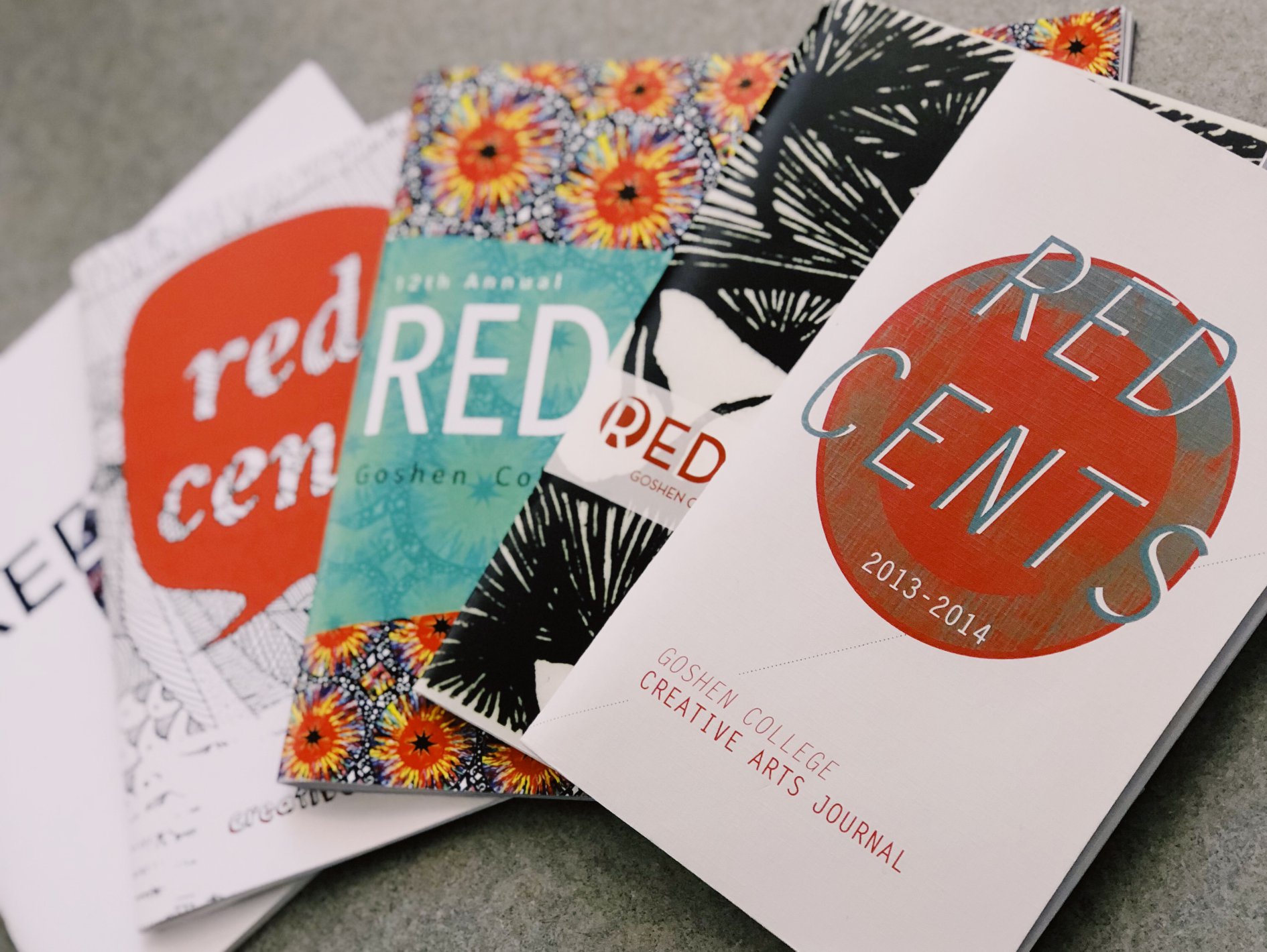Thirteen years ago, Goshen College student Rosanna Nafziger (now Rosanna Henderson) saw much unsung talent among her peers and decided to do something about it. With her creative mind under the guidance of Ann Hostetler, and English professor at GC, “Red Cents” was born.
“There was [no publication at Goshen] that represented the collective work of the whole student body,” Henderson said. “Professor Ann Hostetler [and I] agreed that it would be great to have a place for students’ art and literary work to exist side by side.”Hostetler noted that from the beginning there has been a very deliberate emphasis on “inclusion”: specifically on showcasing works by a diverse group of students – different majors, backgrounds, interests, etc. They also “wanted to see more than just Mennonite surnames on the bylines,” she said.
GC students edit and publish each year’s edition through the college’s own Pinchpenny Press, which publishes work by student authors and occasionally faculty or staff writers. The name “Red Cents” is actually a “nice allusion to Goshen’s Pinchpenny Press,” said Henderson. “[The name] is from the old figure of speech, “I haven’t got a red cent”– referring to the copper color of pennies in the 1500s.”
Henderson said that when Red Cents was started, monetary awards were offered in order to “get buzz” and make publishing Red Cents “feel like it had cachet.”
They also held a release party: a tradition which remains today. Hostetler explained that the working standard of Pinchpenny Press is that a publication should always make back in sales what it cost to produce. An important part of achieving this goal is the money made in sales at the release party.
“It’s a bit of a business enterprise,” said Hostetler. She went on to explain the benefits of having students see various sides of the publishing process from start to finish.
“It will help them know what to expect [when they start in the publishing industry],” she said.
The students who form this year’s Red Cents staff are part of the Editing and Publishing class taught by Hostetler. She said it had become harder in recent years to complete and produce Red Cents entirely in time outside of class. There also was no class previously available which focused on teaching these particular concentrations, which are very helpful for students entering the world of writing to learn.
One member of the class is Jonathan Bontrager-Waite, a first-year, who has ambitions of becoming a writer. He described the class as functioning like a “meeting for an editorial board: we have a list of tasks to complete and our Editor-in-Chief, Maddy Keener, keeps us on track.”
He said sometimes classes are structured more traditionally, with Hostetler lecturing about editing and publishing, but generally it is much more about mimicking the realities of the field to gain practice and experience.
Bontrager-Waite said most of the homework is “very geared toward the publication of Red Cents.” The class has been practicing by revising old issues, but after midterm break they will begin to work in earnest on the 2018 edition.
According to Hostetler, students applied for various positions on the editing/publishing board as part of the class. They had to prepare as if going into a real job interview and were considered and “hired” for positions such as Editor-in-Chief, Publicity and Production Manager, Managing Editor, and Literary Editor based on their applications.
Submissions by the student body come in the forms of prose and poetry, art and photography, and are anonymously selected for publication by the students in the class.
Red Cents has consistently won acclaim at the Indiana Collegiate Press Association (ICPA) literary magazine contest, where students compete among all of Indiana’s colleges and universities. There are no separate categories of competition for division or size. Hostetler pointed out that with such stiff competition, “the fact that a little college like Goshen wins at all is pretty amazing!”
Katie Yoder, a junior history major, won an award last year in the category “Best Short Poem.” She says that she is “not an avid poetry writer,” but that “getting experience in more ‘creative’ writing has enhanced my skills for academic writing in my history major.”
Yoder’s experience serves to further emphasize Hostetler’s description of Red Cents as a place where GC students of all backgrounds can come and express themselves creatively.



